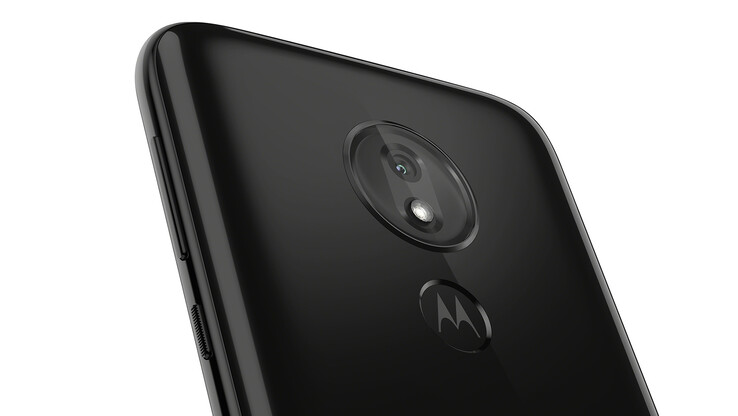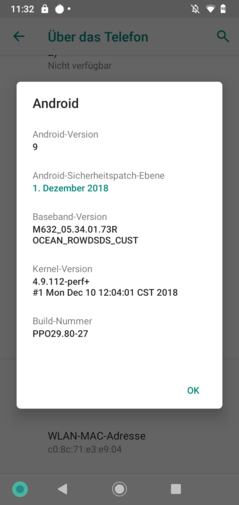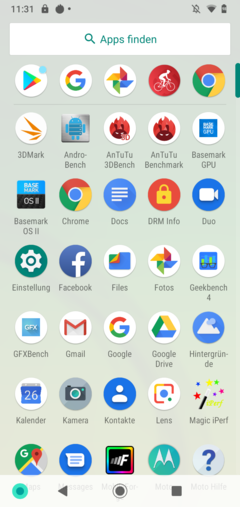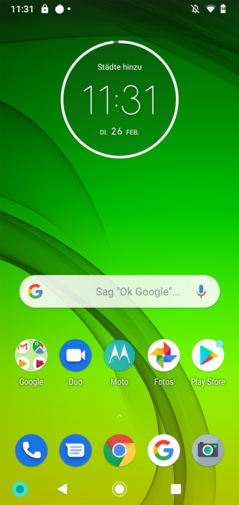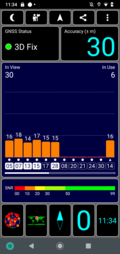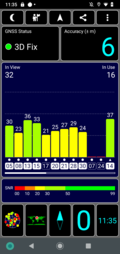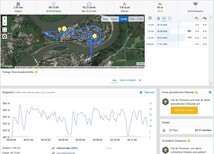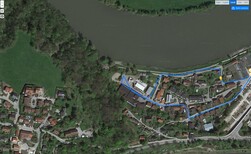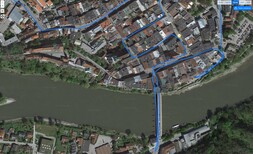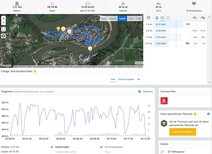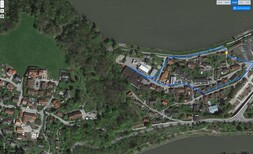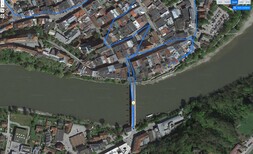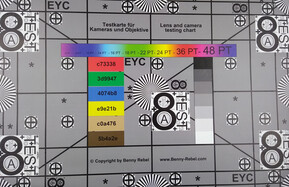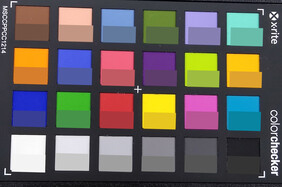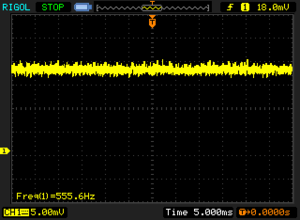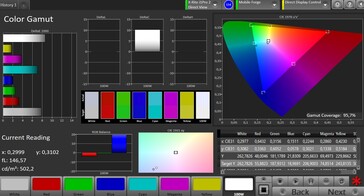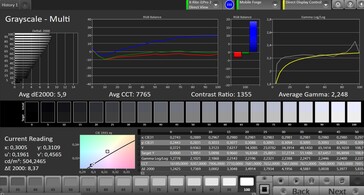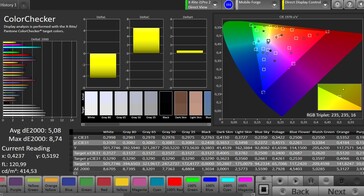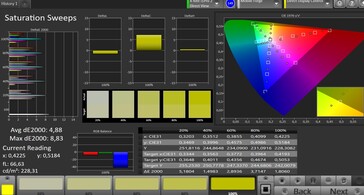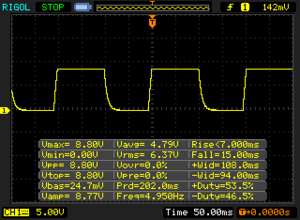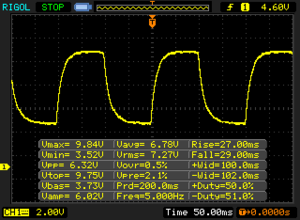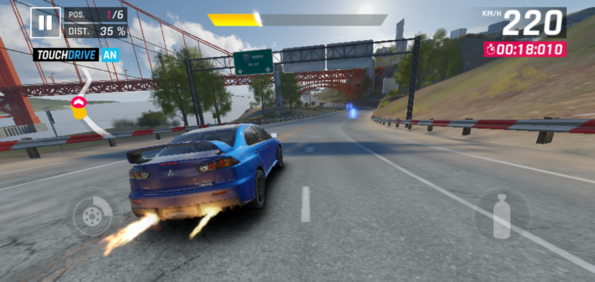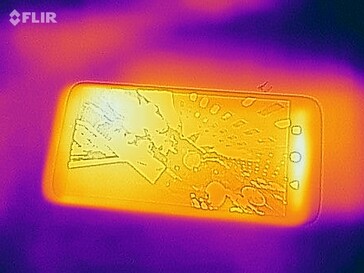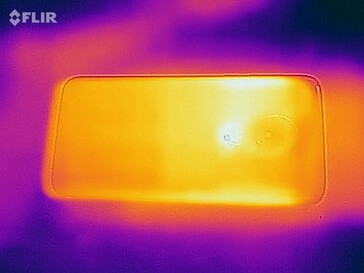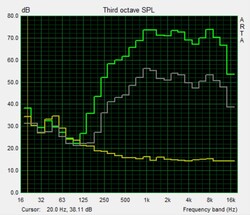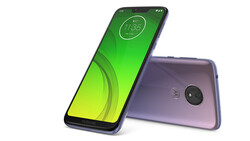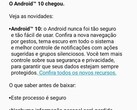Motorola Moto G7 Power Smartphone Review
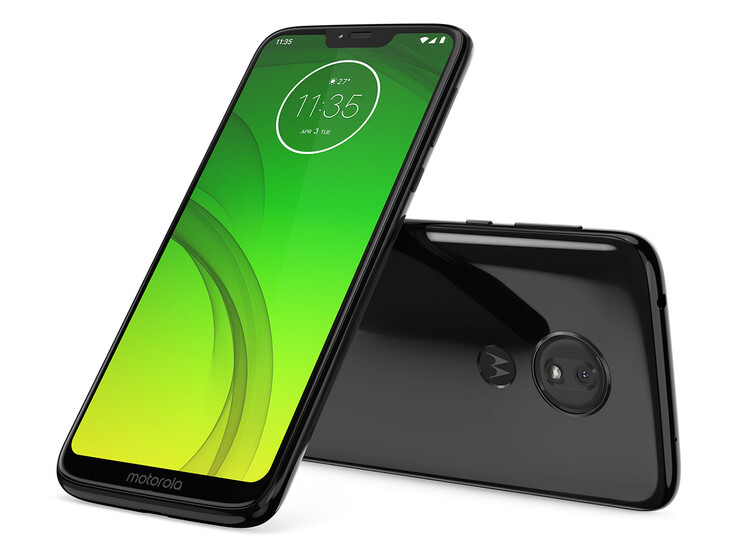
Motorola has released four Moto G7 models so far, of which the Moto G7 Power is the last to enter our offices. Each model specialises in different areas. The Moto G7 focussed on design and the Moto G7 Plus looked to impress with its camera capabilities, while the Moto G7 Play offered great value for money. Now we have the G7 Power that, as the name suggests, focuses on delivering exceptional battery life. The three other Moto G7 models performed well in our tests and all scored above 80%, but how well does the G7 Power stack up against its siblings? A glance to your right at our overall score reveals the answer, but can our review unit achieve Motorola’s claims of 60 hours battery life from a single charge? Read on to find out and how well the G7 Power performs in our tests and how it fares against other midrange smartphones with large batteries.
We have chosen to compare the G7 Power against other midrange smartphones. We have narrowed the pool of devices from which to choose from just to those with large batteries to offer the most directly comparable comparison devices possible. Our comparison devices include the OUKITEL WP5000, the Sony Xperia XA2 Ultra and the Xiaomi Redmi 5 Plus.
Case
Building a smartphone with a large battery is not a new idea, but it typically makes them bulky and often unsightly. This is not the case with the G7 Power though, as it still looks rather slim considering the 5,000 mAh battery contained within its case. Motorola has equipped the device with a larger notch than it used with the Moto G7 or Moto G7 Plus, but it still does not look too intrusive in our opinion.
The wider notch is the main aesthetic difference between the G7 Power and its more-expensive siblings though. The former has a glass back that curves into its frame and the same fingerprint sensor that is adorned with the Motorola Batwing logo, which sits below the rear-facing camera housing. The G7 Power has narrow display bezels too, which gives it a comparatively high screen-to-body ratio for a midrange smartphone with a large battery.
The G7 Power is marginally thicker and larger than its G7 siblings though, and it only has a single rear-facing camera that we will touch more on in our Camera section. Our review unit is considerably lighter than the OUKITEL WP5000 and Sony Xperia XA2 Ultra at 193 g, although the Xiaomi Redmi 5 Plus is noticeably lighter still at 180 g.
Our review unit is just as well built as its siblings too. We could not twist or deform the G7 Power, but we could get it to emit creaking noises; we had to apply a lot of pressure on our review unit to do this though. It is worth noting that the power and volume buttons also felt secure and worked perfectly throughout our tests.
Connectivity
The G7 Power has not only a large battery but also has ample internal storage and RAM for a midrange smartphone. Motorola has equipped the device with 4 GB RAM and 64 GB of internal storage, the latter of which can be expanded with up to 512-GB microSD cards. Moreover, the device has dual-SIM functionality and a dedicated microSD card slot, so you do not need to choose between the two as you do with smartphones that have hybrid second SIM card slots. The Qualcomm Snapdragon 632 SoC, which integrates a Qualcomm Adreno 506 GPU, should provide enough power for most tasks too, but it is not as capable as the Snapdragon 636 SoC in the Moto G7 Plus.
Our review unit even has an NFC chip and an FM radio module, which not all midrange smartphones have. It is worth keeping in mind that the latter uses wired headphones as its antenna. Motorola does not include a pair in the box, but any 3.5 mm headphones will work. There is a USB Type-C port too, which is always welcome. It can only be used for data transfer and charging though; our review unit would not work with Type-C headphones.
Software
The G7 Power ships with Android 9 Pie at the time of writing like the other Moto G7 models that we have reviewed. Likewise, Motorola promises to update the G7 Power to Android 10 and to deliver new security patches every two to three months. All our Moto G7 review units including the G7 Power had December 2018 security patches installed at the time of testing, so we expect Motorola to release a security patch update for all four devices next month.
The OS is the same almost stock Android experience we liked during our Moto G7, Moto G7 Play and Moto G7 Plus tests. In short, the G7 Power is free from bloatware. The company continues to include Moto Actions, which integrates additional functions that are not present in stock Android. Moving the G7 Power down swiftly twice in a chopping motion enables the flashlight, while twisting your wrist quickly twice turns on the default camera app. The G7 Power also has an always-on display (AOD) feature that allows you to preview the battery percentage, date, time, and notifications or missed calls. The AOD can be customised within the overhauled Moto app.
Communication & GPS
The G7 Power has better LTE and Wi-Fi connectivity than the Moto G7 Play, but it is a long way off its more-expensive siblings. The G7 Power can achieve up to 300 Mb/s download speeds over LTE and supports a good amount of LTE bands for a midrange smartphone, but not as many as the Moto G7 or Moto G7 Plus.
Our review unit can connect to 2.4 GHz and 5 GHz Wi-Fi networks though, which is better than the Moto G7 Play can manage. Likewise, the G7 Power achieved considerably faster transfer speeds in our iperf3 Client Wi-Fi tests, but our review unit finished bottom of both our comparison tables. In short, it may be worth paying more for the Moto G7 or Moto G7 Plus if you value Wi-Fi performance.
Like the Moto G7 Play, the G7 Power performed much better in our GPS tests. Our test device found a satellite fix with up to six metres accuracy outdoors, which dropped to 30 metres when we went inside. The device generally took longer than its siblings to find a satellite fix though.
Our review unit also performed well on our bike ride where we compared its location accuracy to a Garmin Edge 520, a professional navigation device. Our review unit deviated 380 metres compared to the route that the Garmin plotted, which is slightly better than our Moto G7 Play review unit managed. Again, the G7 Power took some shortcuts to keep up with us as demonstrated by the screenshot of us cycling down narrow streets, but overall the G7 Power is accurate enough for most general navigation tasks.
Telephone Features & Call Quality
Motorola preinstalls the Google suite of telephony apps just like it does with the other G7 models that we have tested. The app functions just as well as it does on other devices that we have tested.
The G7 Power has better call quality than the Moto G7 Play and performed well in our tests. The earpiece gets so loud that you could probably use it hands-free without even setting it as such. Our call partner sounds noticeably tinny at high volumes though. The microphone did a good job at picking up our voice even when we spoke quietly, which is better than the microphone in the Moto G7 Play.
Calls sound passable on hands-free too and are free from distortion or dissonant background noise. In short, you should have no issue with making or receiving calls with the G7 Power regardless of whether you are speaking on hands-free or with the device up to your face.
Cameras
The G7 Power has a single 12 MP rear-facing camera that has an f/2.0 aperture, a 1.25 μm pixel size and is supported by an LED flash. The sensor is not optically stabilised like the ones that Motorola used in the Moto G7 and Moto G7 Plus. The G7 Power also has an 8 MP front-facing camera that has an f/2.2 aperture and a 1.12 μm pixel size. The device can flash the display to get more light into a scene too instead of using a dedicated LED flash.
Photos look decent in good light, but the rear-facing camera struggles to capture many details even in these seemingly perfect conditions. Picture noise is comparatively weak though, and the degree of dynamic range impressed us, as did the sharpness, which is not overly aggressive. However, low-light conditions highlight the limitations of the G7 Power’s rear-facing camera. Photos are dominated by image noise as demonstrated below by Scene 3, while objects look blurry. Bright areas like the candle-light look completely blown out too to the point where the wick is unrecognisable.
The G7 Power also generally takes decent-looking videos, but the lack of OIS means that panning shots are ruined by motion blur and jerky hand movements. The default camera app has plenty of customisation options though, like slow-motion videos that are shot in 240 FPS or intelligent camera features like automatic composition and numerous filters.
The front-facing camera takes pleasing photos too, but the sensor struggles in the same ways as the rear-facing camera does. In short, do not expect miracles in low-light conditions.
We also subjected the G7 Power to further tests under laboratory conditions to determine how accurately its main camera can reproduce colours. Our review unit generally does a good job, but colours are reproduced too darkly compared to ColorChecker Passport reference colours. We doubt that most people would notice this in daily use though.
The G7 Power captures our test chart well too. However, contrast and sharpness levels drop off noticeably in all but one of the corners in our photo. However, this is what we currently expect from a midrange smartphone, so the G7 Power is in good company here.
Accessories & Warranty
The G7 Power comes with an 18 W charger that Motorola promises will give the device nine hours of use from just 15 minutes charge. There is also a USB Type-A to Type-C cable, a silicone case and a SIM too. There are no headphones in the box, but that is the case with all the G7 devices that we have tested.
The device comes with 24 months manufacturer’s warranty. Please see our Guarantees, Return policies and Warranties FAQ for country-specific information.
Input Devices & Operation
The capacitive touchscreen in our review unit is responsive into the edges of the display and reproduces our inputs accurately. We experienced no issues with the touchscreen throughout testing. Likewise, the accelerometer worked perfectly throughout our tests. The fingerprint sensor worked reliably too and unlocked our review unit with only a minor delay that should not be a problem in daily use.
The power and volume buttons have decent pressure points and sufficiently crisp strokes for a budget smartphone. Motorola also preinstalls Google Gboard as the default keyboard.
Display
The G7 Power has a 6.2-inch IPS display that has a 19:9 aspect ratio like the Moto G7. However, while Motorola also markets it as being a Max Vision screen, it only operates natively at 1570x720 pixels compared to the 2270x1080 at which the Moto G7 runs. Most people will not notice the difference in everyday use though as it still has a pixel density of over 400 PPI and looks sharp to our eyes.
Our review achieved an average maximum brightness of 585 cd/m², according to X-Rite i1Pro 2, which is 23% brighter than the display in our Moto G7 test device. The G7 Power is 92% evenly lit too, which is on par with our comparison devices. Moreover, our review unit has a lower black value than all our comparison devices that helps it achieve an excellent 1,689:1 contrast ratio. It also has acceptable DeltaE deviations, although it is no better than most of our comparison devices in this regard.
| |||||||||||||||||||||||||
Brightness Distribution: 92 %
Contrast: 1689:1 (Black: 0.36 cd/m²)
ΔE Color 5.08 | 0.5-29.43 Ø5
ΔE Greyscale 5.9 | 0.57-98 Ø5.3
95.7% sRGB (Calman 2D)
Gamma: 2.219
| Motorola Moto G7 Power IPS, 1570x720, 6.20 | Sony Xperia XA2 Ultra IPS, 1920x1080, 6.00 | Xiaomi Redmi 5 Plus IPS, 2160x1080, 5.99 | Oukitel WP5000 IPS, 1440x720, 5.70 | Motorola Moto G7 IPS, 2270x1080, 6.20 | |
|---|---|---|---|---|---|
| Screen | 7% | -1% | -76% | -14% | |
| Brightness middle | 608 | 659 8% | 620 2% | 506 -17% | 471 -23% |
| Brightness | 585 | 680 16% | 612 5% | 503 -14% | 453 -23% |
| Brightness Distribution | 92 | 88 -4% | 96 4% | 86 -7% | 94 2% |
| Black Level * | 0.36 | 0.56 -56% | 0.57 -58% | 0.97 -169% | 0.5 -39% |
| Contrast | 1689 | 1177 -30% | 1088 -36% | 522 -69% | 942 -44% |
| Colorchecker dE 2000 * | 5.08 | 2.8 45% | 3.46 32% | 9.4 -85% | 5.5 -8% |
| Colorchecker dE 2000 max. * | 8.74 | 6.5 26% | 7.88 10% | 19.9 -128% | 7.95 9% |
| Greyscale dE 2000 * | 5.9 | 3 49% | 3.9 34% | 13 -120% | 5 15% |
| Gamma | 2.219 99% | 2.18 101% | 2.073 106% | 2.59 85% | 2.326 95% |
| CCT | 7772 84% | 6938 94% | 7230 90% | 10219 64% | 7654 85% |
* ... smaller is better
Screen Flickering / PWM (Pulse-Width Modulation)
| Screen flickering / PWM detected | 556 Hz | ≤ 15 % brightness setting | |
The display backlight flickers at 556 Hz (worst case, e.g., utilizing PWM) Flickering detected at a brightness setting of 15 % and below. There should be no flickering or PWM above this brightness setting. The frequency of 556 Hz is quite high, so most users sensitive to PWM should not notice any flickering. In comparison: 53 % of all tested devices do not use PWM to dim the display. If PWM was detected, an average of 17933 (minimum: 5 - maximum: 3846000) Hz was measured. | |||
Unfortunately, the G7 Power uses pulse-width modulation (PWM) to regulate its brightness, which can cause eye strain and headaches for some people. Our tests determine that the display flickers at 555.6 Hz at 15% brightness and below, which should be high enough not to cause most people any issues.
We also subjected our review unit to further display tests with CalMAN analysis software. In short, the software highlighted no particular issues except for a slight blue tint. We were unable to compensate for the blue tint though as Motorola does not include any colour modes as some manufacturers do.
Display Response Times
| ↔ Response Time Black to White | ||
|---|---|---|
| 22 ms ... rise ↗ and fall ↘ combined | ↗ 7 ms rise | |
| ↘ 15 ms fall | ||
| The screen shows good response rates in our tests, but may be too slow for competitive gamers. In comparison, all tested devices range from 0.1 (minimum) to 240 (maximum) ms. » 42 % of all devices are better. This means that the measured response time is similar to the average of all tested devices (21.5 ms). | ||
| ↔ Response Time 50% Grey to 80% Grey | ||
| 56 ms ... rise ↗ and fall ↘ combined | ↗ 27 ms rise | |
| ↘ 29 ms fall | ||
| The screen shows slow response rates in our tests and will be unsatisfactory for gamers. In comparison, all tested devices range from 0.2 (minimum) to 636 (maximum) ms. » 91 % of all devices are better. This means that the measured response time is worse than the average of all tested devices (33.8 ms). | ||
The G7 Power is easy to use outdoors thanks to its bright display. Our review unit has stable viewing angles too, and we noticed no brightness, colour or image distortions even at acute viewing angles. Hence, the G7 Power should remain readable from practically any angle, unless reflections wash out the display, which can occur in bright sunlight.
Performance
Motorola equips the G7 Power with a Qualcomm Snapdragon 632 SoC just like the Moto G7 and the Moto G7 Play. Our review unit scored comparatively well in synthetic benchmarks and outperformed most of our comparison devices. The Snapdragon 632 is less impressive in GPU benchmarks though as it integrates a Qualcomm Adreno 506, which is also found in the Snapdragon 625. By contrast, the Snapdragon 630 has the newer Adreno 508 and correspondingly performs better in many GPU-heavy benchmarks. Hopefully, Qualcomm will improve this with its next generation of SoCs.
| AnTuTu v7 - Total Score (sort by value) | |
| Motorola Moto G7 Power | |
| Sony Xperia XA2 Ultra | |
| Xiaomi Redmi 5 Plus | |
| Oukitel WP5000 | |
| Motorola Moto G7 | |
| Average Qualcomm Snapdragon 632 (97294 - 108408, n=5) | |
| AnTuTu v6 - Total Score (sort by value) | |
| Motorola Moto G7 Power | |
| Sony Xperia XA2 Ultra | |
| Xiaomi Redmi 5 Plus | |
| Oukitel WP5000 | |
| Motorola Moto G7 | |
| Average Qualcomm Snapdragon 632 (76724 - 87883, n=4) | |
The G7 Power also performed well in browser benchmarks considering its price. Moreover, browsing the web consistently felt snappy during our tests and scrolling remained smooth throughout.
| JetStream 1.1 - Total Score | |
| Average of class Smartphone (last 2 years) | |
| Motorola Moto G7 (Chrome 71) | |
| Motorola Moto G7 Power | |
| Average Qualcomm Snapdragon 632 (42.6 - 45.5, n=5) | |
| Sony Xperia XA2 Ultra (Chrome 65) | |
| Oukitel WP5000 (Chrome 66) | |
| Xiaomi Redmi 5 Plus (Chrome 66) | |
| Octane V2 - Total Score | |
| Average of class Smartphone (4633 - 89112, n=210, last 2 years) | |
| Motorola Moto G7 Power | |
| Motorola Moto G7 (Chrome 71) | |
| Average Qualcomm Snapdragon 632 (8185 - 8420, n=6) | |
| Oukitel WP5000 (Chrome 66) | |
| Sony Xperia XA2 Ultra (Chrome 65) | |
| Xiaomi Redmi 5 Plus (Chrome 66) | |
| Mozilla Kraken 1.1 - Total | |
| Xiaomi Redmi 5 Plus (Chrome 66) | |
| Oukitel WP5000 (Chrome 66) | |
| Sony Xperia XA2 Ultra (Chrome 65) | |
| Motorola Moto G7 (Chrome 71) | |
| Average Qualcomm Snapdragon 632 (4806 - 5037, n=5) | |
| Average of class Smartphone (388 - 9999, n=172, last 2 years) | |
* ... smaller is better
Motorola appears to have equipped the G7 Power with the same internal storage as its more-expensive siblings. Our review unit and the Moto G7 achieved almost identical transfer speeds in AndroBench 3-5, which underlines just how good value for money the G7 Power is. The device is also faster than most of our comparison devices in this regard.
Likewise, the G7 Power and Moto G7 appear to share the same microSD card reader. Both readers are faster than the class average and trade blows with our fastest comparison devices.
| Motorola Moto G7 Power | Sony Xperia XA2 Ultra | Xiaomi Redmi 5 Plus | Oukitel WP5000 | Motorola Moto G7 | Average 64 GB eMMC Flash | Average of class Smartphone | |
|---|---|---|---|---|---|---|---|
| AndroBench 3-5 | -20% | -17% | -45% | 2% | -19% | 344% | |
| Sequential Read 256KB | 292.4 | 273.7 -6% | 270 -8% | 257.5 -12% | 297 2% | 273 ? -7% | 1505 ? 415% |
| Sequential Write 256KB | 215.2 | 138.8 -36% | 194.5 -10% | 162.1 -25% | 216 0% | 176.8 ? -18% | 1112 ? 417% |
| Random Read 4KB | 67.5 | 76 13% | 79.5 18% | 66.9 -1% | 69.3 3% | 59.1 ? -12% | 247 ? 266% |
| Random Write 4KB | 72 | 10.1 -86% | 7.1 -90% | 9.89 -86% | 75.6 5% | 31.7 ? -56% | 271 ? 276% |
| Sequential Read 256KB SDCard | 86.7 ? | 85.9 ? -1% | 84.4 -3% | 21.11 ? -76% | 86.9 ? 0% | 77.4 ? -11% | |
| Sequential Write 256KB SDCard | 65.4 ? | 63.3 ? -3% | 59.5 -9% | 20.5 ? -69% | 66.8 ? 2% | 58.3 ? -11% |
Games
The G7 Power handles most games with ease. Even complex games like Asphalt 9: Legends run smoothly because of the device’s 720p display, which takes some of the pressure off the GPU compared to the 1080p screen in the Moto G7. Moreover, the accelerometer and touchscreen worked perfectly throughout our gaming tests.
Emissions
Temperature
The G7 Power remains pleasingly cool even under sustained load. Our review unit reached a maximum of 32.4 °C during our tests, which is only lukewarm. Likewise, the device averaged 26 °C at idle, so the G7 Power should never feel hot to the touch regardless of how hard you push it.
(+) The maximum temperature on the upper side is 32.4 °C / 90 F, compared to the average of 35 °C / 95 F, ranging from 21.9 to 56 °C for the class Smartphone.
(+) The bottom heats up to a maximum of 31.5 °C / 89 F, compared to the average of 33.8 °C / 93 F
(+) In idle usage, the average temperature for the upper side is 26 °C / 79 F, compared to the device average of 32.7 °C / 91 F.
Speakers
The G7 Power has a single speaker like the Moto G7 Play, which is also its earpiece. However, while the latter sounds tinny at high volumes, the G7 Power’s speaker sounds pleasingly balanced, and it even reproduces some bass tones, which is rare for most smartphones.
Our review unit also reproduced audio cleanly over external headphones and speakers via both Bluetooth and the 3.5 mm jack.
Motorola Moto G7 Power audio analysis
(+) | speakers can play relatively loud (83.1 dB)
Bass 100 - 315 Hz
(-) | nearly no bass - on average 69.5% lower than median
(+) | bass is linear (0% delta to prev. frequency)
Mids 400 - 2000 Hz
(-) | nearly no mids - on average 69.5% lower than median
(+) | mids are linear (0% delta to prev. frequency)
Highs 2 - 16 kHz
(-) | nearly no highs - on average 69.5% lower than median
(+) | highs are linear (0% delta to prev. frequency)
Overall 100 - 16.000 Hz
(-) | overall sound is not linear (117.6% difference to median)
Compared to same class
» 85% of all tested devices in this class were better, 9% similar, 6% worse
» The best had a delta of 12%, average was 38%, worst was 134%
Compared to all devices tested
» 95% of all tested devices were better, 3% similar, 2% worse
» The best had a delta of 4%, average was 25%, worst was 134%
Xiaomi Redmi 5 Plus audio analysis
(+) | speakers can play relatively loud (86.9 dB)
Bass 100 - 315 Hz
(-) | nearly no bass - on average 27.3% lower than median
(±) | linearity of bass is average (11.2% delta to prev. frequency)
Mids 400 - 2000 Hz
(+) | balanced mids - only 3.4% away from median
(+) | mids are linear (3.8% delta to prev. frequency)
Highs 2 - 16 kHz
(+) | balanced highs - only 4.5% away from median
(+) | highs are linear (4.8% delta to prev. frequency)
Overall 100 - 16.000 Hz
(±) | linearity of overall sound is average (19.8% difference to median)
Compared to same class
» 24% of all tested devices in this class were better, 8% similar, 68% worse
» The best had a delta of 12%, average was 38%, worst was 134%
Compared to all devices tested
» 45% of all tested devices were better, 7% similar, 48% worse
» The best had a delta of 4%, average was 25%, worst was 134%
Battery Life
Power Consumption
The G7 Power is a relatively power-efficient device, but it does consume more than most of our comparison devices, the class average and the average of devices powered by the Snapdragon 632 SoC that we have already tested. Our review unit consumes a minimum of 1.1 W at idle and a maximum of 6.9 W under sustained load, which are almost identical values to what the Moto G7 achieved in the same tests. However, the G7 Power can afford to have slightly higher power consumption at idle thanks to its 5,000 mAh battery, which leads us nicely onto our next section and the G7 Power’s arguably most important feature.
| Off / Standby | |
| Idle | |
| Load |
|
| Motorola Moto G7 Power 5000 mAh | Sony Xperia XA2 Ultra 3580 mAh | Xiaomi Redmi 5 Plus 4000 mAh | Oukitel WP5000 5200 mAh | Motorola Moto G7 3000 mAh | Average Qualcomm Snapdragon 632 | Average of class Smartphone | |
|---|---|---|---|---|---|---|---|
| Power Consumption | 7% | -8% | 4% | 2% | 8% | 6% | |
| Idle Minimum * | 1.1 | 0.77 30% | 0.7 36% | 1.18 -7% | 1.1 -0% | 0.924 ? 16% | 0.897 ? 18% |
| Idle Average * | 1.9 | 2.12 -12% | 2.8 -47% | 2.17 -14% | 1.8 5% | 1.748 ? 8% | 1.452 ? 24% |
| Idle Maximum * | 2.8 | 2.17 22% | 3.4 -21% | 2.26 19% | 2.6 7% | 2.36 ? 16% | 1.629 ? 42% |
| Load Average * | 4.1 | 4.3 -5% | 4.2 -2% | 3.68 10% | 4.2 -2% | 4.18 ? -2% | 5.55 ? -35% |
| Load Maximum * | 6.9 | 6.73 2% | 7.2 -4% | 6.06 12% | 6.8 1% | 6.6 ? 4% | 8.31 ? -20% |
* ... smaller is better
Battery Life
The G7 Power achieved incredible runtimes in our battery life tests thanks to its 5,000 mAh battery. Our review unit lasted for over 35 hours in our Wi-Fi battery life test, which is almost double the runtime that our best-placed comparison device achieved. Moreover, the G7 Power lasted 8:33 hours under sustained load, which is an amazing feat. In effect, the device should last a full workday even if it is constantly pushed hard. It may even achieve 60 hours on a single charge as Motorola claims, but only if you use it sparingly. The G7 Power only needs charging every few days generally though.
| Motorola Moto G7 Power 5000 mAh | Sony Xperia XA2 Ultra 3580 mAh | Xiaomi Redmi 5 Plus 4000 mAh | Oukitel WP5000 5200 mAh | Motorola Moto G7 3000 mAh | |
|---|---|---|---|---|---|
| Battery Runtime | -57% | -77% | -45% | -60% | |
| WiFi v1.3 | 2143 | 849 -60% | 497 -77% | 1189 -45% | 798 -63% |
| Load | 513 | 238 -54% | 219 -57% | ||
| Reader / Idle | 1788 | 1548 | |||
| H.264 | 876 | 819 |
Pros
Cons
Verdict
The Motorola Moto G7 Power is perhaps the best of the four G7 models that Motorola has released. The device offers almost all the features that its more-expensive siblings have, but it will last days longer between charges. The bigger battery adds weight, which may put off some people, although we think it is worth the compromise considering the runtimes that it achieved in our tests.
The Motorola Moto G7 Power not only provides decent performance at an affordable price, but it will last for days between charges, which few modern smartphones can do.
The G7 Power is cheaper too, but it also shares some of the downsides that affect the Moto G7, namely its underwhelming GPU. While the 720p display may seem outdated in 2019, it helps the G7 Power achieve a smoother gaming experience than the Moto G7, which underlines just how good value for money the G7 Play is. We would suggest considering the G7 Plus if you want a smartphone with a decent camera, but the G7 Power’s cameras are good enough in most scenarios. Overall, the Motorola Moto G7 Power offers excellent value for money and hardly any compromises in achieving its outstanding battery life.
Motorola Moto G7 Power
-
05/14/2020 v7
Stefan Schomberg


 Deutsch
Deutsch English
English Español
Español Français
Français Italiano
Italiano Nederlands
Nederlands Polski
Polski Português
Português Русский
Русский Türkçe
Türkçe Svenska
Svenska Chinese
Chinese Magyar
Magyar